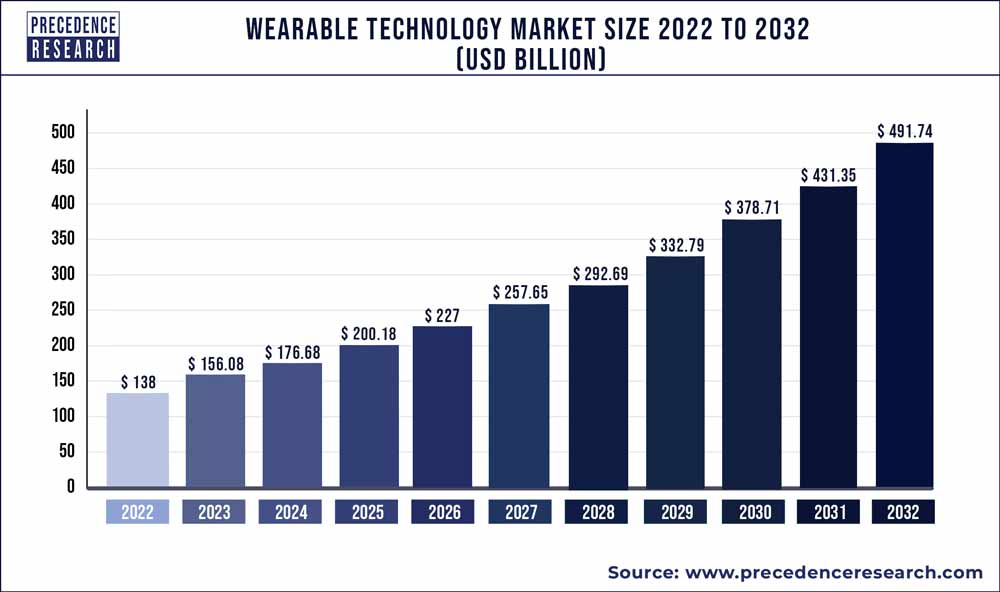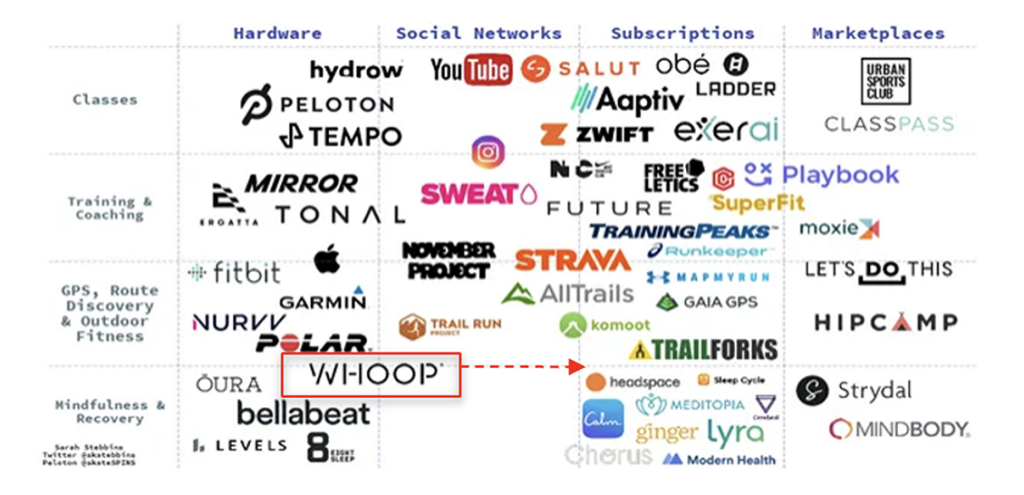
Introduction:
Our fascination with longevity and optimal health is as old as humanity itself, but the means to achieve it have evolved dramatically with technological advancements. Wearables have become the epitome of this evolution, empowering individuals to take charge of their health. They are not mere gadgets; they are personal wellness companions that track vitals, monitor activities, and analyze dietary habits. This self-monitoring capability has opened a new frontier in personal health, enabling people to make informed decisions and timely adjustments to their lifestyles.
The impact of wearables extends beyond personal health management to influence the broader technological landscape. These devices represent a significant shift in our interaction with technology, offering insights into a range of health metrics and spurring innovations in software and app development. The ecosystems surrounding wearables have become hotbeds for creativity, fostering advancements across various domains, including productivity, fitness, and entertainment.
As wearables continue to evolve, they are becoming central to health monitoring and preventative healthcare. They promote a proactive approach to wellness, potentially reducing the burden on healthcare systems by alerting users to potential health issues early. This shift towards preventive care has far-reaching implications, not only for individuals but also for global health systems.
Moreover, the data collected by wearables is invaluable, driving advancements in big data analytics, machine learning, and personalized medicine. This convergence of wearable technology and data analytics is not just improving our understanding of health but is also leading to significant enhancements in quality of life.
Founded in 2012, WHOOP emerged from the vision of a former collegiate athlete, dedicated to unlocking human performance. Their innovative product, a comprehensive wearable system, offers continuous physiological monitoring, encompassing heart rate and sleep cycles. This system, coupled with a membership program, leverages proprietary algorithms to provide personalized performance assessments and recovery advice.
Company Overview and Technology Innovation:
The WHOOP Strap, a flagship product, exemplifies the company’s commitment to transforming health data into actionable insights. This device, wearable on the wrist or body, caters to a range of activities and lifestyles, reflecting WHOOP’s understanding of diverse consumer needs. Their technology, rooted in empirical research and advanced sensors, continuously evolves through user data integration, ensuring relevance and precision.
WHOOP’s consumer base is broad, appealing to elite athletes, health-conscious professionals, and wellness-focused individuals. Their products are designed to cater to those who prioritize fitness, recovery, and well-being, aligning with a shift in the health sector from reactive care to proactive wellness management. The evolution of WHOOP’s offerings mirrors the overall development of wearable fitness trackers, transitioning from basic monitoring to comprehensive health insights. In this journey, WHOOP has not only contributed to individual health optimization but has also influenced the wider landscape of wearable technology and health sector innovation.
Industry Overview:


The global wearables industry, with a projected growth rate of 12.2% CAGR through 2032, is a testament to the increasing demand for health technology. North America, holding a significant market portion, is complemented by the Asia-Pacific region’s burgeoning potential. Within this landscape, WHOOP has effectively positioned itself by blending advanced tracking technology and sleek hardware design. It stands out for its comprehensive biometric data analysis, a feature underpinned by extensive research.

WHOOP’s approach encompasses personalized analytics, targeted marketing to fitness enthusiasts, strategic partnerships with key organizations, premium design aesthetics, strong data privacy protocols, and seamless integrations with popular fitness apps. This multifaceted strategy enables WHOOP to excel in both the hardware domain and the broader fitness and health technology sector, reflecting a deep understanding of market trends and consumer needs.
Differentiation Sources:
WHOOP’s differentiation in the wearables market is a multifaceted strategy that emphasizes its unique position. The company’s advanced sensors and biomarkers are a key differentiator, as WHOOP is capable of tracking a broad range of health metrics, a feat backed by extensive research. This allows for a depth of health insights unparalleled by traditional activity trackers. Another crucial aspect is WHOOP’s sophisticated analytics, which offers in-depth, personalized health data. Users can share detailed health trends with coaches or healthcare professionals, enhancing the practical utility of the device. This capability not only caters to individual users but also has professional applications. WHOOP’s niche focus on athletes and fitness enthusiasts ensures efficient marketing and strong user engagement.
This targeted approach has enabled WHOOP to develop a product-market fit that resonates deeply with its primary audience. The company’s enterprise partnerships, such as with the PGA and the NFL Players Association, extend its reach and user base, demonstrating the versatility and broad appeal of its technology. In design, WHOOP opts for a premium approach, using high-quality materials and a minimalist aesthetic. This not only appeals to style-conscious consumers but also reinforces the brand’s value proposition. Data privacy and security are other key differentiators for WHOOP. In an era where data privacy is paramount, WHOOP’s commitment to this aspect makes it a trustworthy choice for consumers.
Finally, WHOOP’s integration with popular fitness apps and smart equipment enhances its ecosystem, creating a network effect that increases user retention and engagement. These strategic integrations ensure that WHOOP remains relevant and integrated into the wider digital health landscape. Collectively, these elements underpin WHOOP’s competitive advantage, showcasing a brand that is innovative, user-focused, and deeply embedded in the evolving landscape of health and fitness technology.
Strategic Choices:
WHOOP’s strategic choices in its business model, platform focus, and target market are key to its success in the competitive wearables market.
Business Model: WHOOP’s unique value proposition caters to a primarily North American market of fitness enthusiasts, expanding into Europe recently. Its revenue model involves a zero upfront hardware cost, countered by a higher subscription fee, thereby reducing adoption barriers and ensuring recurring revenue. WHOOP’s cost model leverages outsourced manufacturing, focusing its resources on R&D, product design, and technology development, a strategy that enhances its competitive edge.
Platform Focus: WHOOP emphasizes an interaction-oriented approach, fostering user connectivity and community building, which increases loyalty and retention. The integration with a range of fitness apps and health devices maximizes ecosystem value. Importantly, WHOOP focuses on eliminating barriers to consumption, aligning with the strategic guidance for successful platform companies.
Target Market: WHOOP’s niche focus targets high-performance individuals and healthcare providers, a strategy that allows for targeted development and greater engagement. Catering to high willingness-to-pay customers within the premium segment differentiates WHOOP in a crowded market. Furthermore, enterprise partnerships with insurers and healthcare systems expand WHOOP’s reach and decrease customer acquisition costs, demonstrating a strategic approach to growth and market penetration.
These strategic choices reflect WHOOP’s understanding of the market dynamics and consumer preferences, positioning it effectively in the evolving landscape of health and fitness technology.
Challenges and Recommendations:
To enhance WHOOP’s market penetration and navigate the chasm in consumer adoption, a sophisticated blend of strategies is vital. Firstly, in the B2B sector, WHOOP should focus on its WHOOP Unite product, exploiting the rising corporate interest in employee wellness. This shift towards enterprise solutions can dramatically expand WHOOP’s user base, moving beyond the athlete-centric model.
Simultaneously, in the B2C arena, targeting teenagers presents a significant opportunity. This demographic is not only health-conscious and tech-savvy but also highly influential in social circles and online platforms. By engaging with this group through gamification, social media presence, and appealing collaborations, WHOOP can bridge the gap between early adopters and the early majority, a critical step in ‘crossing the chasm’ of consumer adoption.
Moreover, WHOOP’s product and marketing strategies should emphasize accessibility and appeal to a broader audience. This means refining the product design to suit varied preferences and intensifying marketing efforts in channels frequented by non-athlete demographics.

In essence, WHOOP’s challenge is not just about expanding its consumer base but also about transforming its brand perception. Moving from a niche, athlete-focused brand to a more inclusive health and wellness provider is key. This transition requires a deep understanding of different consumer segments, innovative marketing strategies, and a product that resonates with a wider audience. By addressing these aspects, WHOOP can effectively ‘cross the chasm’ and establish itself as a versatile player in the wearables market.
Conclusion:
In summarizing WHOOP’s journey and future prospects, we can acknowledge its distinct place in the wearables industry. Initially focusing on high-performance athletes with advanced biometric tracking and analytics, WHOOP has not only catered to a niche market but also set a high standard in personalized health technology. Its strategic choices in business modeling, platform focus, and market targeting demonstrate a keen understanding of market dynamics and consumer preferences.
Looking ahead, WHOOP faces the challenge of broadening its market reach beyond its established niche. Strategies like expanding B2B initiatives, targeting the wellness needs of corporate employees, and appealing to younger, tech-savvy demographics are pivotal. These steps, along with a continued emphasis on innovative technology and user-centric design, will be key to WHOOP’s success. Its ability to adapt and evolve in a rapidly changing digital health landscape will determine its future trajectory and potential to lead in the wearables sector.
Credit: The original work for this article was done in a group, by Eric Crowley, Ariel Kobliner, Amanda Paige Moelis, Michel Moussatche, and Blair Weintraub, for MGMT7310 – Technology Strategy @ The Warton School – University of Pennsylvania in December 2023. (Link to original presentation)
References:
- https://www.whoop.com/us/en/
- https://www.precedenceresearch.com/wearable-technology-market
- https://www.whoop.com/us/en/press-center/whoop-enters-brick-and-mortar-retail-through-best-buy/
- https://medium.com/iconiq-growth/a-story-by-sarah-stebbins-80d2a9f99aa2
- https://www.linkedin.com/feed/update/urn:li:activity:7132400313726038017/
- https://www.gearpatrol.com/fitness/a35686256/learned-from-whoop/
- https://telecoms.com/523843/wearables-on-the-up-again-as-prices-slide/
- https://www.grandviewresearch.com/industry-analysis/wearable-technology-market
- https://www.prnewswire.com/news-releases/whoop-launches-whoop-unite-an-industry-leading-health-and-performance-solution-for-organizations-301559973.html
- https://www.businesswomanpa.com/wearable-fitness-tech-in-every-price-range/
- https://research.contrary.com/reports/whoop
- https://roboticsbiz.com/the-complete-history-of-wearable-technology-a-timeline/
- https://www.wareable.com/fitness-trackers/the-origins-of-the-fitness-tracker-1234
- https://www.elearners.com/online-degrees/technology/history-of-wearable-technology/
- https://440industries.com/history-of-wearable-technology-all-you-need-to-know/
- https://en.wikipedia.org/wiki/WHOOP_(company)